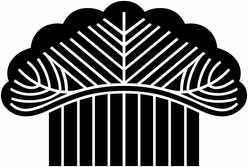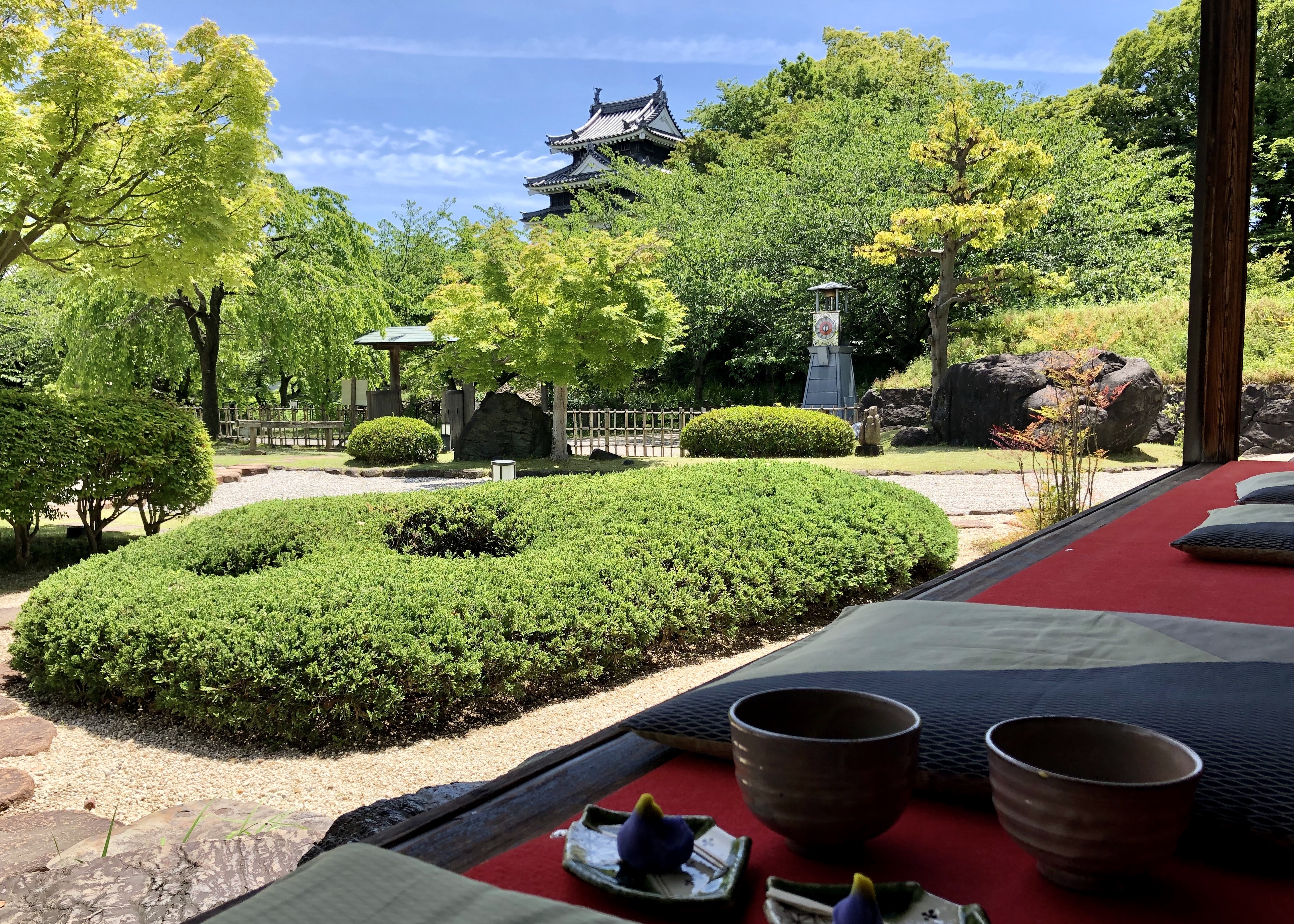|
Nishio Clan
was a Japanese samurai kin group. Papinot, Jacques Edmond Joseph. (1906). ''Dictionnaire d’histoire et de géographie du Japon''; Papinot, (2003)"Nishio," ''Nobiliare du Japon'', p. 42 retrieved 2013-5-5. History The clan claims descent from the Kira clan, a branch of the Seiwa Genji line. Kira Yoshitsugu, a son of Kira Mochihiro, served under Oda Nobunaga, Toyotomi Hideyoshi and Tokugawa Ieyasu adopted the family name of Nishio. Under the Tokugawa shogunate, the Nishio, as hereditary vassals of the Tokugawa clan, were classified as one of the '' fudai'' ''daimyō'' clans.Appert, Georges. (1888) ''Ancien Japon,'' p. 75/ref> Nishio Yoshitsugu was given the 12,000 ''koku'' Haraichi Domain in Musashi Province in 1602. His son, Nishio Tadanaga was transferred to the 20,000 ''koku'' Shirai Domain in Kōzuke Province in 1616, and subsequently to Tsuchiura Domain (Hitachi Province) from 1617-1649. The clan then ruled Tanaka Domain (Suruga Province) from 1649-1679, Komoro Domain (S ... [...More Info...] [...Related Items...] OR: [Wikipedia] [Google] [Baidu] |
Nishio Kamon
is a city located in Aichi Prefecture, in the Chūbu region of Japan. , the city had an estimated population of 169,984 in 65,553 households, with a population density of 1,054 persons per km2. The total area of the city was . It is a regional commercial and manufacturing center and the country's leading producer of powdered green tea. Geography Nishio is situated on the northern coast of Mikawa Bay on the Pacific Ocean in southern Aichi Prefecture. The city lies along the eastern bank of the Yahagi River. Sheltered by Chita Peninsula and Atsumi Peninsula, the local climate is mild. Parts of the city lie within the borders of the Mikawa Wan Quasi-National Park Climate The city has a climate characterized by hot and humid summers, and relatively mild winters (Köppen climate classification ''Cfa''). The average annual temperature in Nishio is 15.7 °C. The average annual rainfall is 1596 mm with September as the wettest month. The temperatures are highest on average ... [...More Info...] [...Related Items...] OR: [Wikipedia] [Google] [Baidu] |
Musashi Province
was a Provinces of Japan, province of Japan, which today comprises Tokyo, Tokyo Metropolis, most of Saitama Prefecture and part of Kanagawa Prefecture. It was sometimes called . The province encompassed Kawasaki, Kanagawa, Kawasaki and Yokohama. Musashi bordered on Kai Province, Kai, Kōzuke Province, Kōzuke, Sagami Province, Sagami, Shimōsa Province, Shimōsa, and Shimotsuke Provinces. Musashi was the largest province in the Kantō region. History Musashi had its ancient capital in modern Fuchū, Tokyo, and its provincial temple in what is now Kokubunji, Tokyo. By the Sengoku period, the main city was Edo, which became the dominant city of eastern Japan. Edo Castle was the headquarters of Tokugawa Ieyasu before the Battle of Sekigahara and became the dominant city of Japan during the Edo period, being renamed Tokyo Prefecture, Tokyo during the Meiji Restoration. Hikawa Shrine (Saitama), ''Hikawa-jinja'' was designated as the chief Shinto shrine (''ichinomiya'') of the provinc ... [...More Info...] [...Related Items...] OR: [Wikipedia] [Google] [Baidu] |
Kazoku
The was the hereditary peerage of the Empire of Japan, which existed between 1869 and 1947. It was formed by merging the feudal lords (''Daimyo, daimyō'') and court nobles (''kuge'') into one system modelled after the British peerage. Distinguished military officers, politicians, and scholars were occasionally ennobled until the country's defeat in the World War II, Second World War in 1945 (). The system was abolished with the Constitution of Japan, 1947 constitution, which prohibited any form of aristocracy under it, but ''kazoku'' descendants still form the core of the traditional upper class in the country's society, distinct from the nouveau riche. should not be confused with , which is pronounced the same in Japanese, but written with different characters, meaning "immediate family" (as in the film ''Kazoku (film), Kazoku'' above). Origins Following the Meiji Restoration of 1868, the ancient court nobility of Kyoto, the , regained some of its lost status. Several ... [...More Info...] [...Related Items...] OR: [Wikipedia] [Google] [Baidu] |
Awa Province (Chiba)
was a Provinces of Japan, province of Japan in the area of modern Chiba Prefecture.Louis-Frédéric, Nussbaum, Louis-Frédéric. (2005). "''Awa no Kuni''" in . It lies on the tip of the Bōsō Peninsula (房総半島), whose name takes its first ''kanji'' from the name of Awa Province and its second from Kazusa Province, Kazusa and Shimōsa Province, Shimōsa Provinces. Its abbreviated form name was or . Awa Province (Tokushima), Awa Province in Shikoku phonetically has the same name, but is written with different ''kanji'' (阿波国). Awa is classified as one of the provinces of the Tōkaidō (region), Tōkaidō. Under the ''Engishiki'' classification system, Awa was ranked as a "middle country" (中国) and a "far country" (遠国). History Awa was originally one of four districts of Japan, districts of Kazusa Province. It was well-known to the Imperial Court in Nara period Japan for its bountiful seafoods, and is mentioned in Nara period records as having supplied fish to ... [...More Info...] [...Related Items...] OR: [Wikipedia] [Google] [Baidu] |
Hanabusa Domain
was a Japanese feudal domain of the early Meiji period, located in Nagasa District, Awa Province. It was centered at what is now the area of the city of Kamogawa in modern Chiba Prefecture. History In 1867, during the Meiji Restoration, the final ''shōgun'', Tokugawa Yoshinobu resigned his office to Emperor Meiji and leadership of the Tokugawa clan to Tokugawa Iesato. In 1868, Iesato was demoted in status to that of an ordinary ''daimyō'', and assigned the newly created Shizuoka Domain, which included all of former Sunpu Domain, neighboring Tanaka and Ojima Domains, and additional lands in Tōtōmi and Mutsu Provinces for a total revenue of 700,000 ''koku''. The new domain covered the western two-thirds of Shizuoka Prefecture, plus the Chita Peninsula in Aichi Prefecture. In the process, the existing ''daimyōs'' in Suruga and Tōtōmi Provinces were displaced. This included the eighth (and final) ''daimyō'' of Yokosuka Domain, Nishio Tadaatsu. As Tadaatsu had proved ... [...More Info...] [...Related Items...] OR: [Wikipedia] [Google] [Baidu] |
Meiji Restoration
The , referred to at the time as the , and also known as the Meiji Renovation, Revolution, Regeneration, Reform, or Renewal, was a political event that restored Imperial House of Japan, imperial rule to Japan in 1868 under Emperor Meiji. Although there were ruling emperors before the Meiji Restoration, the events restored practical power to, and consolidated the political system under, the Emperor of Japan. The Restoration led to enormous changes in Japan's political and social structure and spanned both the late Edo period (often called the Bakumatsu) and the beginning of the Meiji era, during which time Japan rapidly Industrialization, industrialised and adopted Western culture, Western ideas and production methods. The origins of the Restoration lay in economic and political difficulties faced by the Tokugawa shogunate. These problems were compounded by the encroachment of foreign powers in the region which challenged the Tokugawa policy of , specifically the arrival of the Pe ... [...More Info...] [...Related Items...] OR: [Wikipedia] [Google] [Baidu] |
Tōtōmi Province
was a Provinces of Japan, province of Japan in the area of Japan that is today western Shizuoka Prefecture.Louis-Frédéric, Nussbaum, Louis-Frédéric. (2005). "''Tōtōmi''" in . Tōtōmi bordered on Mikawa Province, Mikawa, Suruga Province, Suruga and Shinano Province, Shinano Provinces. Its abbreviated form name was . The origin of its name is the old name of Lake Hamana. History Tōtōmi was one of the original provinces of Japan established in the Nara period under the Taihō Code. The original capital of the province was located in what is now Iwata, Shizuoka, Iwata, and was named Mitsuke – a name which survived into modern times as Mitsuke-juku, a shukuba, post station on the Tōkaidō (road), Tōkaidō. Under the ''Engishiki'' classification system, Tōtōmi was ranked as a "superior country" (上国) in terms of importance, and one of the 16 "middle countries" (中国) in terms of distance from the capital. During the early Muromachi period, Tōtōmi was ruled ... [...More Info...] [...Related Items...] OR: [Wikipedia] [Google] [Baidu] |
Yokosuka Domain
was a Han (Japan), feudal domain under the Tokugawa shogunate of Edo period Japan, located in Tōtōmi Province. It was centered at Yokosuka Castle in what is now the Matsuo district of the city of Kakegawa, Shizuoka, Kakegawa in Shizuoka Prefecture."Tōtōmi Province" at JapaneseCastleExplorer.com retrieved 2013-8-14. History In February 1601, Ōsuga Tadamasa, lord of Kururi Domain in Kazusa Province, was allowed by Tokugawa Ieyasu to return to his ancestral estates in Tōtōmi, and was granted the status of a 55,000 ''koku'' ''daimyō''. Ōsuga Tadamasa was the son of the Castellan of Yokosuka Castle and had been relocated by Toyotomi Hideyoshi along with Ieyasu to the Kantō region. During the unsettled period following Hideyoshi’s death, Ōsuga Tadamas ...[...More Info...] [...Related Items...] OR: [Wikipedia] [Google] [Baidu] |




